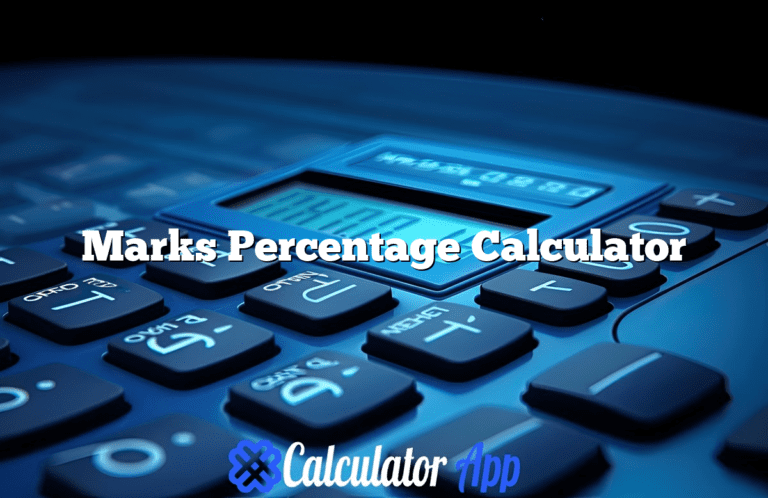Dog Years Calculator
Understanding Your Dog’s Age: A Comprehensive Guide to Dog Years and How Our Dog Years Calculator Can Help
As pet owners, we often find ourselves pondering the age of our beloved dogs. We lovingly refer to them as our “furry family members,” and their age can evoke a sense of urgency when it comes to understanding their needs and health. If you’ve ever wondered how old your dog is in human years or how to accurately calculate their age, you’re not alone. This comprehensive guide will take you through everything you need to know about dog years and how to use our Dog Years Calculator to better understand your dog’s life stage.
What Are Dog Years?
Dogs age differently than humans due to a variety of biological and physiological factors. Traditionally, a common rule of thumb has been to multiply a dog’s age by seven to convert it to human years. However, this method is overly simplistic and can be misleading.
Why Is the Seven-Year Rule Misleading?
The seven-year rule suggests that one dog year equals seven human years, which doesn’t accurately represent the aging process of dogs. The reality is that dogs mature more quickly in the early years of their lives. For example:
- Puppies age rapidly during their first year, reaching an equivalent human age of around 15 years.
- By age two, a dog is roughly 24 in human years.
- After that, the aging process slows, and each subsequent year is roughly equivalent to 4-5 human years.
This accelerated aging process means that understanding your dog’s age requires a more nuanced approach.
The Biology of Aging in Dogs
Understanding the biological underpinnings of dog aging can illuminate why different breeds age at different rates. Dogs experience changes in their body systems and cellular structures, affecting how they grow and mature.
- Metabolic Rate: Dogs typically have a higher metabolic rate than humans, which can contribute to their quicker aging process, especially in smaller breeds. Larger breeds often age faster than their smaller counterparts due to the increased strain on their bodies.
- Developmental Stages: The developmental stages of dogs can also differ significantly. For example, a small breed like a Dachshund may be fully grown by 1 year, while a large breed like a Saint Bernard may take up to 2 years to reach maturity.
- Genetics: Genetic factors play a critical role in the lifespan and aging process of dogs. Some breeds are predisposed to certain health issues that can affect their overall longevity and well-being.
- Lifestyle Factors: Diet, exercise, and veterinary care can all influence a dog’s rate of aging. Dogs that receive regular veterinary check-ups and a balanced diet are more likely to live longer, healthier lives.
The Importance of Knowing Your Dog’s Age
Understanding your dog’s age in relation to human years has significant implications for their care and well-being. Here are several reasons why knowing your dog’s age is essential:
1. Health Care Needs
As dogs age, their health care requirements change. Puppies and young dogs may require vaccinations and spaying/neutering, while older dogs may need more frequent veterinary visits for chronic conditions or preventive care. By knowing your dog’s age, you can tailor their health care to their specific life stage.
2. Dietary Adjustments
The nutritional needs of dogs evolve as they age. Puppies need a diet rich in calories and nutrients to support their rapid growth, while older dogs may require lower-calorie diets to maintain a healthy weight. Understanding your dog’s age can help you provide the appropriate diet to support their health. (See Also: Odds Calculator)
Nutritional Guidelines by Age
- Puppies (0-1 Year): High-protein puppy food to support growth.
- Young Adults (1-6 Years): Balanced adult dog food with moderate protein and fat.
- Seniors (7+ Years): Senior dog food that is lower in calories, with added fiber and joint-supporting nutrients.
3. Exercise Requirements
Dogs of different ages have varying energy levels and exercise needs. Puppies are often energetic and require ample playtime, while older dogs may benefit from more moderate exercise routines to maintain joint health and prevent obesity. Knowing your dog’s age allows you to create a suitable exercise regimen.
Exercise Recommendations by Age
- Puppies: Short play sessions throughout the day to help develop muscles and coordination.
- Young Adults: Daily walks and playtime to maintain fitness.
- Seniors: Gentle walks and low-impact activities, such as swimming, to keep them active without overexertion.
4. Behavioral Changes
A dog’s behavior can change with age. Puppies are typically playful and energetic, while older dogs may become calmer or more reserved. Understanding these changes helps you set realistic expectations for behavior and training.
Common Behavioral Changes
- Puppies: Chewing, exploring, and teething behavior.
- Adolescents (6 months – 2 years): Increased independence, possible stubbornness, and hyperactivity.
- Adults: More settled behavior but may still have bursts of energy.
- Seniors: Decreased energy and possible anxiety or confusion.
5. End-of-Life Considerations
As dogs age, they may face health issues that can significantly affect their quality of life. Being aware of your dog’s age allows you to make informed decisions about their care and well-being, especially as they approach the later stages of their life.
Recognizing Signs of Aging
- Mobility Issues: Difficulty getting up or climbing stairs.
- Changes in Appetite: Eating less or refusing to eat.
- Behavioral Changes: Increased anxiety or confusion.
- Health Problems: Persistent coughing, vomiting, or lethargy.
How Our Dog Years Calculator Works
Our Dog Years Calculator simplifies the process of determining your dog’s age in human years. Here’s how it works:
Calculating from Dog’s Age
- Enter Your Dog’s Age: You can input your dog’s age in years and optionally in months. This allows for more accurate calculations, especially for younger dogs who might not yet have reached a full year of age.
- Conversion Formula: The calculator uses a scientifically-backed formula to convert your dog’s age into equivalent human years, taking into account their breed and size.
- Results: Once you’ve entered the necessary information, the calculator provides:
- The equivalent human years.
- A detailed breakdown of the calculation, including how age influences life stages.
Calculating from Dog’s Birth Date
Alternatively, if you prefer, you can calculate your dog’s age based on their birth date:
- Input Birth Date: By entering your dog’s birth date into the calculator, the tool will automatically calculate their age based on the current date.
- Human Age Conversion: Similar to the age entry method, it will convert this age into human years using the same scientifically-backed approach.
This dual functionality of the Dog Years Calculator provides flexibility for users to choose how they wish to input their dog’s information.
Understanding the Calculation: A Closer Look
To appreciate how our Dog Years Calculator functions, let’s break down the process of converting dog years to human years based on size and breed. (See Also: Marks Percentage Calculator)
Factors Influencing Aging
- Breed: Smaller dog breeds tend to live longer and age more slowly compared to larger breeds. For instance, a Chihuahua may be considered a senior at around 12-15 years, while a Great Dane is typically considered a senior at around 7-10 years.
- Size: Generally, the larger the dog, the shorter its lifespan. Consequently, larger dogs age more quickly during their formative years compared to smaller dogs.
The Calculation Process
To accurately calculate a dog’s age in human years, we often use a modified version of the traditional formula:
- For the First Year: The first year of a dog’s life is typically equivalent to about 15 human years. This represents the rapid growth and maturation that occurs during this period.
- For the Second Year: The second year generally adds around 9 human years, bringing the total to about 24 human years.
- For Each Subsequent Year: For years three and beyond, each dog year usually corresponds to 4-5 human years, depending on the size of the breed. Smaller breeds might age more slowly than larger breeds.
Example Calculation
To illustrate how the calculator works, let’s look at an example:
- If you have a 5-year-old Labrador Retriever:
- The first year is 15 human years.
- The second year adds 9 human years (totaling 24 years).
- The next three years each add 4 human years (totaling an additional 12 years).
Thus, a 5-year-old Labrador would be approximately 36 human years old.
Frequently Asked Questions (FAQs)
1. How does the Dog Years Calculator work?
The Dog Years Calculator converts your dog’s age or birth date into equivalent human years using a scientific formula that accounts for breed and size differences.
2. Is the seven-year rule accurate?
The seven-year rule is an oversimplification. Dogs age more quickly in their early years, making the calculation more complex. The calculator provides a more accurate representation of your dog’s age.
3. How do I know my dog’s age in human years?
You can either input your dog’s age in years and months or their birth date into the calculator, which will then calculate their equivalent human age.
4. What if my dog is a mixed breed?
For mixed breeds, you can use the average size and characteristics of their predominant breed to estimate their aging process.
5. How can I support my dog as they age?
Regular veterinary check-ups, a balanced diet, appropriate exercise, and mental stimulation are key to supporting your dog’s health throughout their life stages.
Conclusion
Understanding your dog’s age and how it translates into human years is crucial for their overall well-being. It helps you tailor their health care, diet, exercise, and lifestyle to their specific life stage. Our Dog Years Calculator is a practical tool that simplifies this process, allowing you to make informed decisions about your dog’s care.
By taking the time to understand your dog’s age, you not only enhance their quality of life but also deepen the bond you share with your furry friend. Remember that as they age, they continue to rely on you for support, love, and care, making it all the more important to stay informed about their changing needs.
With this guide and our Dog Years Calculator at your fingertips, you’re well-equipped to embark on this journey of understanding and caring for your beloved dog through every stage of their life.





